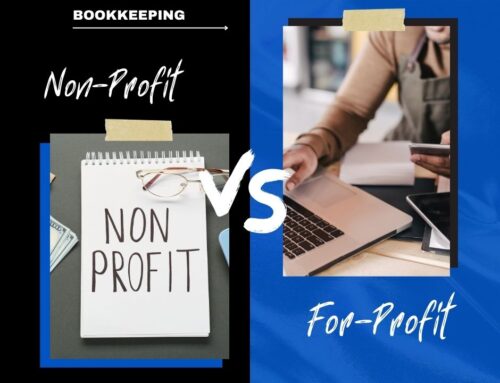Effective cash flow management needs to be a priority for all small business owners. You can’t expect to survive or succeed without cash flow analysis on a regular basis.
Small business cash flow is instrumental for today and tomorrow and unforeseen surprises in the market and economy. If a positive cash flow can’t be produced at the onset, it could be the downfall of your company. In fact, studies show that 20% of small businesses don’t survive their first year; 50% of startups fail within five years.
Navitance sees new businesses manage cash flow improperly, operating activities out of their league and borrowing money at inopportune times all the time. Let’s break down ways to churn these woes into healthy cash flow management tips for small businesses so you have more cash to pay vendors, get better credit approval and plan ahead.
How Managing Cash Flow can Make or Break your SMB
An increase cash flow may seem encouraging for a startup company, but it is not cash flow management.
Two key components of cash flow management include:
- Accounts receivable
- Accounts payable
The balance of your checking account alone won’t tell you the full story of how your business is doing from a cash flow perspective. Other factors need to be taken into consideration.
With that in mind, there are proactive steps you can take to ensure that cash flow won’t be a problem for your business down the road. So, use this guide as a resource of best practices for cash flow management.
Know Your Breakeven Point
As many small business owners know, startups don’t start making money on day one of their operations. You’re going to start with cash flow issues, putting you in the red.
Depending on the type of business you have and the industry you’re in, those initial startup expenses might be higher for some of you compared to others. Then you’ll need to factor in all the operating costs that start once you’re officially open for business.
When is your company going to become profitable?
Surprisingly, a large percentage of new business owners can’t answer this question—that’s a big problem.
Knowing your breakeven point makes it much easier for you to project cash flow down the road.
Operating with negative cash flow is dangerous. So, you need to make sure that you’re on pace to reach that breakeven point before you put yourself in a situation that’s financially insurmountable.

Keep Cash on Reserve
At times, your business will go through periods of low cash flow. This is an almost inevitable part of being a small business owner.
Things happen; You can’t always rely on a steady weekly or monthly income. SAVE MONEY!
Sometimes, there are factors at play that are completely out of your hands. But you can’t let these circumstances become the downfall of your business.
You should always keep cash on reserve. This will make it possible for you to operate during those times when cash flow is low.
Don’t allow slow months of work to be the reason successfully manage your bills.
Diligently Collect Receivables
Obviously, your business needs to have money coming in.
You complete work in the form of goods or services, and you should be paid for your efforts, right? Although it sounds simple, I’m sure you know that this isn’t always the case.
Learning effective invoicing practices will make it easier for you to collect your receivables in a timely manner. Make sure you establish a billing and payment cycle that works for both you and your clients.
There are other ways to get your invoices paid on time. You can potentially offer your customers a discount for paying early.
For example, let’s say your invoices are normally due within 30 days of when you send invoices. You could implement a policy that gives customers a 5% or even a 10% discount for paying within 7 days. Late Payments will have an inverse effect costing the vendor 5 or 10% more…
Also, don’t be afraid to follow up on unpaid invoices. It’s your right! They’ve agreed to payment terms and a delay payments disrupt your cash flow situation.
You can’t just assume that every invoice you send will be paid without any further contact. Once an invoice becomes past due, you need to have a system in place for reminding your customers of the balance owed.
Check out our guide on innovative technologies to streamline your business’ bookkeeping. You’ll find software, like Bill.com, that makes it easy for you to manage your invoices.
Extend Payable Contracts
Always look for a great deal with your payables and cash conversion cycle.
Don’t lock yourself into a contract with vendors that force you to pay in an unreasonable amount of time. Try to negotiate extended payable contracts of 60 or even 90 days.
You could even see if they’ll work in a discount for early payment, like what you might offer your clients.
With that said, this doesn’t mean you should wait until the last minute to pay your bills.
But if you’re in a bind, you don’t want to be forced to come up with cash that you don’t have. These extended contracts will buy you some time. Plus, they’ll help you avoid late fees.
Monitor Your Cash Flow
Your cash flow isn’t going to manage itself. Someone needs to be responsible for keeping an eye on your cash.
Don’t assume that this is happening unless you’ve assigned this position to someone. Just because the bookkeeper is doing daily deposits and updating your financial statements, it’s not their responsibility to monitor cash flow.
This is an extremely important role. Whoever is responsible for monitoring cash flow will let you know when your cash dips below a predetermined threshold that is a cause for concern.
Sometimes your accountant can help you out with this. But for the most part, cash flow management should be performed by a controller or chief financial officer.
For those of you without a CFO, you should consider an outsourced or interim CFO.
I also recommend having an unsecured revolving line of credit from a financial institution. You can draw on this during lean times and repay when your cash becomes flush again.

Audit Your Inventory
Inventory might be the cause of cash flow problems.
This is something that I see all the time, especially with startups. A company tries to get the best deal possible by purchasing inventory in high quantities. In theory, this makes sense. But not if you’re unable to sell that inventory at a timely rate.
If you have inventory that’s sitting around and not being sold for months at a time, that could be cash on hand.
Perform an inventory audit to come up with a better way to manage your purchases. Don’t buy extra inventory just to get price breaks if it’s going to compromise your cash flow position.
Collect Deposits
This strategy depends on the type of business you have.
But if you’re offering a product or service that’s expensive, I’d recommend collecting a deposit upfront. There are several benefits of this tactic.
The deposit will help you cover some of the initial costs of your operating expenses. It also reduces the risk of a customer not paying.
Furthermore, deposits keep your receivables lower, which is something we talked about earlier.
Let’s say you implement a policy to collect a 20% deposit for all sales higher than $1,000. You just lowered your receivables by 20%. Plus, if you’re selling a tangible product, your customers will be more likely to pay the balance now that they have made a financial investment in the purchase.
Conclusion
Do not let poor cash flow management destroy your company.
There are certain steps you can take to make sure that cash flow isn’t a problem, even at times when your business might be struggling.
Follow these tips that I’ve outlined above. If you need additional help managing your cash flow, you might want to consider interim CFO services. Here at Navitance, we specialize in startups and nonprofits.





